
Concepción is a city and commune in south-central Chile, and the geographical and demographic core of the Greater Concepción metropolitan area, one of the three major conurbations in the country. It has a significant impact on domestic trade being part of the most heavily industrialized region in the country. It is the seat of the Concepción Province and the capital of the Bío Bío Region. It sits about 500 km south of the nation's capital, Santiago.

Linares is a Chilean city and commune located in the Maule Region and lies in the fertile Chilean Central Valley, 303 km (188 mi) south of Santiago and 50 km (31 mi) south of Talca, the regional capital. Linares is the capital city of the province of Linares.
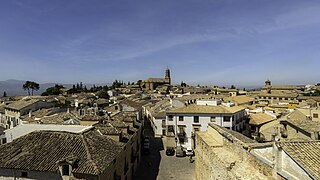
Baeza is a city and municipality of Spain belonging to the province of Jaén, in the autonomous community of Andalusia. It is part of the comarca of La Loma. The present name was established in Roman times as Vivatia, then Biatia by the Visigoths, Bayyasa by the Moors from the 8th century onwards; until it became Baeza.

The Diocese of Linares is a Latin Church ecclesiastical territory or diocese of the Catholic Church in Linares, Chile. It was established by Pope Pius XI on October 18, 1925 in his papal bull Notabiliter Aucto.
Monsignor Juan Subercaseaux Errázuriz was a Chilean Roman Catholic archbishop. Juan Subercaseaux was of French and Basque descent.
Putagán is a village in the Chilean municipality of Villa Alegre, Province of Linares, Maule Region. Pop. 622. Altitude (meters) 112. Time zone (est) UTC−4(-3DT). Located 292 Kilometers south of Santiago. Its economy is based around agricultural activities like vineyards, rice, corn plantations, and lately berries for the European markets.
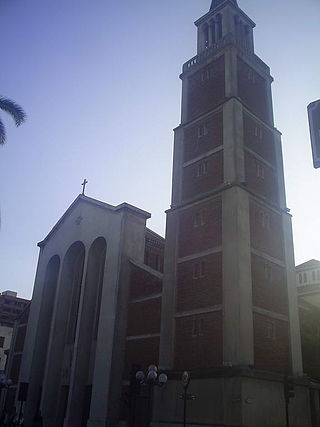
The Roman Catholic Diocese of Talca,, is a suffragan diocese of the archdiocese of Santiago de Chile. Its current bishop, Galo Fernández Villaseca, was appointed on 20 March 2021. The diocesan cathedral is in the city of Talca.

The Metropolitan Archdiocese of Santiago de Chile is one of the five Latin metropolitan sees of the Catholic Church in Chile.
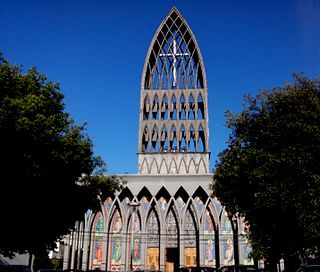
The Roman Catholic Diocese of Osorno is a suffragan diocese of the archdiocese of Puerto Montt, in Chile. The diocese was established on 15 November 1955 by Pope Pius XII by means of the papal bull Christianorum qui in Diocesibus.

The Roman Catholic Archdiocese of La Serena is an archdiocese located in the city of La Serena in Chile.

The Cumaná Cathedral also called Metropolitan Cathedral of Cumaná is a religious building belonging to the Catholic Church and is located in Rivas street opposite the Plaza Andrés Eloy Blanco, in the city of Cumaná, capital of Sucre state in northeastern of the South American country of Venezuela.

The Cathedral of St. James, in Valparaíso, Chile, is the cathedral of the Roman Catholic Diocese of Valparaíso in Chile. Also known simply as Valparaíso Cathedral, the cathedral church is located in the neighborhood of El Almendral neighborhood, on the east side of the Plaza de la Victoria.
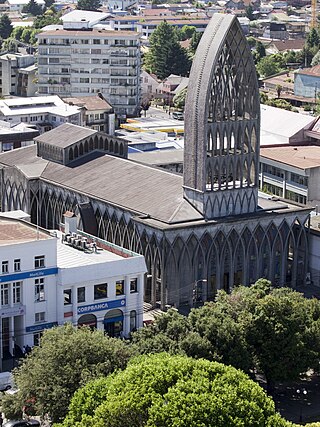
The Cathedral of St. Matthew, in Osorno, Chile is the cathedral of the Roman Catholic Diocese of Osorno.

The Our Lady of the Rosary Cathedral Also Valdivia Cathedral Is the main Catholic church of the Valdivia diocese, built in the center of the homonymous city of Valdivia, in the South American country of Chile.

The Cathedral of St. Mary of the Angels, also Los Ángeles Cathedral, is the Catholic cathedral of the Diocese of Santa María de Los Ángeles in Chile. It is located in the center of the city, opposite the Plaza de Armas.

The St. Augustine Cathedral Also Talca Cathedral is a cathedral of the Catholic church in Chile dedicated to St. Augustine. It is located in the Plaza de Armas de Talca, and is the seat of the bishop of the Diocese of Talca in Chile.

The St. Bartholomew Cathedral Also Chillán Cathedral Is a temple of the Catholic Church, home of the Diocese of Chillán located in the center of the city of Chillán, Chile in front of the Plaza de Armas, in the corner of streets Arauco and Libertad. It is also a symbol and icon of the city, as a result of the city's progress after the Chillan earthquake of 1939. It was declared a National Monument in December 2014.

The St. Joseph Cathedral Also Ciudad Guzmán Cathedral It is a Catholic cathedral in Mexico that serves as the mother church of the Roman Catholic Diocese of Ciudad Guzmán and the seat of its bishop. Built at the end of the 19th century, it was completed around 1900.
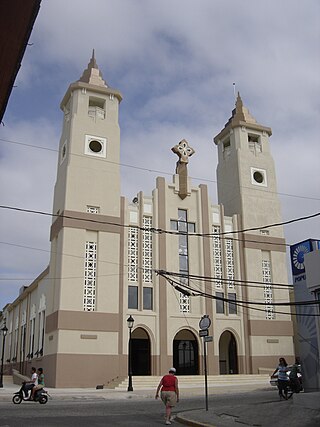
The Cathedral of St. Philip the Apostle in Puerto Plata Also known as Puerto Plata Cathedral, and as St. Philip the Apostle Cathedral is a cathedral of the Catholic Church that is located in Calle José del Carmen Ariza 36 of the city of Puerto Plata part of the province of the same name to the north of the island of Hispaniola and the Caribbean country of the Dominican Republic, It should not be confused with other cathedrals of the same name in Chile, Puerto Rico and Venezuela.
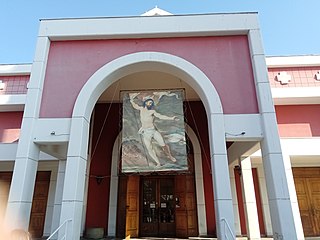
The Cathedral of St. Joseph or Melipilla Cathedral, located in Melipilla, Santiago, Chile, is the cathedral church of the Roman Catholic Diocese of Melipilla.




















